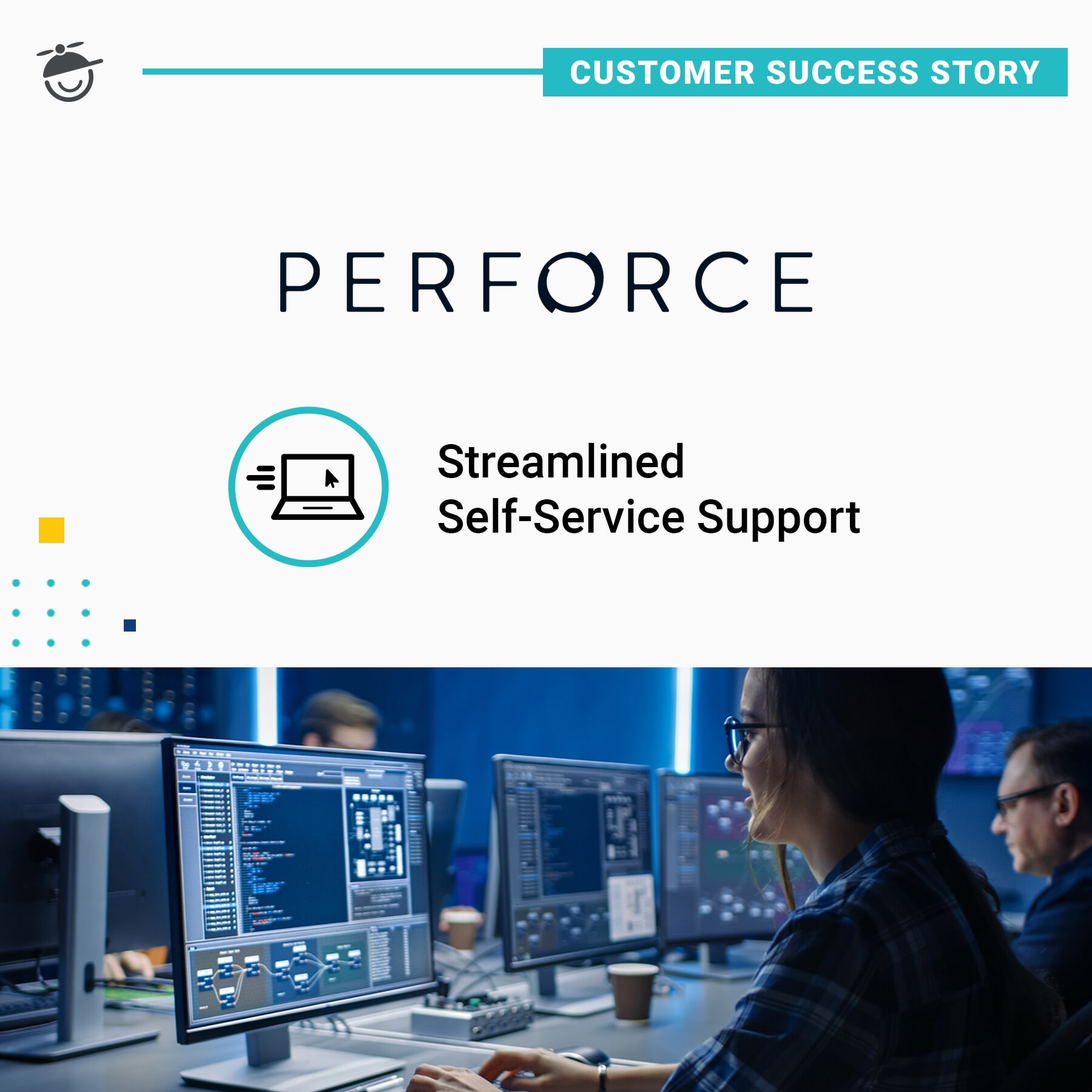Whether building, testing or managing applications, more than 20,000 enterprise customers and 1 million-plus users worldwide rely on Perforce Software Inc. to drive their business-critical initiatives. With its portfolio of scalable DevOps solutions, Perforce helps these organizations to overcome complex product development challenges by improving productivity, visibility and security throughout the product life cycle.
Today, many of the product teams at Perforce have come to rely on MadCap Software to deliver localized modern Help and documentation to their users. Since migrating to MadCap Software’s solutions, Perforce has been able to:
- Reduce demands on the Perforce support team via intuitive, easy-to-search content for customers and internal support teams.
- Facilitate translation and localization, particularly with Perforce’s customers in Japan.
- Ensure consistency and compliance across multiple outputs while streamlining content development.
- Automate diagnostic messages in Perforce’s Helix QAC static code analysis software more effectively
Developing Easy-to-Search Content Across the Organization
Some of the Perforce solutions supported by MadCap Flare-based documentation include ALM, Agile project management and version control. The company produces between 25 to 30 guides for the Helix ALM line, which includes five products; 7 guides for its Hansoft Agile project management software; and 35 guides for the Helix Core, Helix4Git and Helix TeamHub version control solutions. Collectively, the web-based guides help customers to install, use, administer and integrate the products.
In the past, a majority of the documentation was published as PDFs. Today, their guides are modern HTML5-based Help featuring a responsive design that adjusts to users’ screens, easy-to-use side navigation and an intuitive search experience. “There are so many things we can do with the Flare native search that makes it easier for customers to find specifically what they are looking for,” notes Jeanne Wiegelmann-Alfandary, a technical documentation manager at Perforce.
In addition, the ease of searching Perforce product guides and Help topics has also led to increased use of documentation by their customers, as well as the company’s internal teams. Amy says their Flare-based Help has been able to drastically reduce support calls plus, internally, developers are relying on it to answer questions.
Ensuring Consistency and Efficiency
Perforce technical writers have taken advantage of MadCap Flare’s capabilities to simplify their work and streamline projects. Key among these is topic-based authoring, which facilitates content reuse and consistency.
“While I work on a release-to-release basis, I always push out Help in between, so I’m typically making updates every two weeks,” Amy observes. “What I love about Flare is that it’s so easy to publish new content quickly, and our content quality and consistency have improved because of content reuse.”
Moreover, Perforce technical writers also make extensive use of conditional text. For example, the company’s Helix ALM product has a desktop-based client and a web client. The conceptual information is largely the same for the two clients, but the step-by-step, task-based information differs significantly. With MadCap Flare, the team can use the same topic but then use conditions to designate content that is either desktop client or web client only.
“With conditional text in Flare, I'm not maintaining two topics. I have everything in one place, and I can see where the differences and similarities are,” Amy notes.
Facilitating Translation with MadCap Lingo
To facilitate translation Perforce relies on MadCap Lingo, a computer-aided translation management software that is tightly integrated with MadCap Flare.
The static code analysis group has an in-house Japanese translator who is also a technical writer and uses both MadCap Flare and MadCap Lingo to produce Japanese-language content. Meanwhile, the version control team relies on MadCap Lingo to package up each manual for an external translator.
“When we translate, we export our Flare content into Lingo and break it up by manual, so we have a different Lingo project per manual. Then we create bundles for the translator and send them out,” Jeanne notes. “Once we get the localized content from the translator, it will be identical to my Flare version, and it will work exactly the same way.”
Automating Messages and Code Errors
Within the Perforce static code analysis group, MadCap Flare has gone beyond supporting the development of online Help documentation to enabling automated diagnostic messages directly from the Helix QAC software. Helix QAC analyzes customers’ code, and then if code is incorrect or breaks syntax, it generates a message indicating the nature of the error.
With the help of MadCap Flare, the team can now automatically generate messages about various different code errors. Collectively, the 26 Helix QAC products now rely on some 30,000 snippets embedded in the software to produce the messages. Facilitating the effort was the fact that both MadCap Flare and Helix QAC are based on standard XML.
“One of our products, alone, has about 3,000 of these diagnostic messages, which are part of the code and have to stay part of the code, but I wanted them in Flare,” Brian recalls. “So I got the developers to automatically push their XML into my Flare project, which then drops automatically into my reports. Everything is created as fully formed messages, which appear as lines of text, and they are all snippets. I don't have to do anything with them. And, we're doing that in Japanese, so it's all automatic down the line.”








